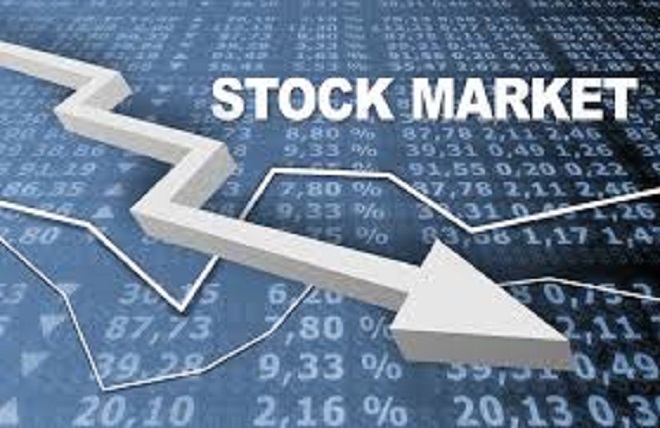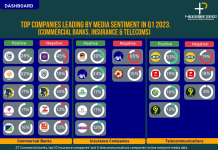- Nigeria loses N1.71tn
Over $18 trillion have been wiped out globally by the COVID-19 crisis between February and March 2020, even as capital markets maintained their role of facilitating the transfer of funds in the real economy.
In the First Quarter (Q1) 2020 and the full-year 2019 Market Financial report just released by the World Federation of Exchanges (WFE), a copy of which THISDAY obtained at the weekend, the WFE placed its 2019 full-year statistics side by side the statistics for Q1 2020, with the aim of helping to better understand the intensity of the shock the global economy has experienced over the last quarter and the challenges that markets have faced.
According to the WFE, more than $18 trillion globally were wiped out by the COVID-19 pandemic over the course of February and March 2020.
It noted that even in such a difficult time, markets kept playing their role, facilitating the transfer of funds in the real economy.
The global report is coming on the heels of a recent News Agency of Nigeria (NAN) report that the Nigerian capital market lost N1.71 trillion or 12.54 per cent with market capitalisation falling from N13.657 trillion on February 28 to N11.945 trillion as at close of trading on April 20.
But the WFE report stated that in the first quarter of 2020, the global number of initial public offerings (IPOs) and the amount of capital raised significantly increased from the first quarter of 2019.
In March, described as the most impacted month of the first quarter of 2020, the WFE still saw more than 70 IPOs worldwide, raising more than $5.5 billion in capital.
The financial report said at the end of Q1 2020, the domestic market capitalisation of all the regions amounted to $73.14 trillion, a 13.61 per cent decrease when compared to Q1 2019.
All regions were equally affected. While the Americas lost 17.28 per cent of its value, the Asia-Pacific region posted12.76 per cent and the EMEA region 7.11 per cent.
This is compared to Q4 2019 with a global decrease (-20.75 per cent), comprising the Americas (-22.18 per cent ), Asia-Pacific (17.48 per cent ) and EMEA (-22.79 per cent).
Global stock markets started 2019 against the backdrop of low market capitalisation figures in 2018.
As the year unfolded, however, the fears of a global economic slowdown receded and geopolitical and trade tensions showed some respite.
By the end of 2019, most indicators were positive. Domestic market capitalisation reached record high levels in markets across the globe and investment flows through IPOs substantially increased. On the downside, there were significant declines in new listings through IPOs.
While some of the positive indicators in 2019 are partly a result of having started the year at a low base, they are also a consequence of specific events, like Saudi Aramco’s IPO, the lowering of interest rates by the US Federal Reserve and some large IPOs in the technology sector, including interest.
Exchange-traded derivatives volumes reached record volumes in 2019, with only currency futures showing a decline when compared with 2018.
Global domestic market capitalisation in 2019 was up by 25.58 per cent relative to the end of 2018. All three regions enjoyed an increase in market capitalisation – Americas up by 19.44 per cent, Asia-Pacific up by 30.0 per cent and Europe, the Middle East and Africa (EMEA) up by 31.9 per cent.
In 2019, the value of trades in equity shares was down by 7.7 per cent , but the number of trades was up by 13 per cent when compared with 2018, the contrast explained by regional trends.
For value traded, Asia-Pacific’s uptick of 10.9 per cent was not large enough to outpace the downtick in both the Americas (-15.37 per cent ) and EMEA (-15.3 per cent).
And for a number of trades, Asia-Pacific’s increase of 23.3 per cent versus the Americas down by 1.7 per cent and EMEA also down by 2.7 per cent , was enough to drive a global positive trend.
As of the end of Q1 2020, the value of trades inequities amounted to $32.5 trillion, an increase of 36.13 per cent globally when compared to Q1 2019.
All regions were positive. The Americas saw a 42.29 per cent increase, the Asia-Pacific region a 25.97 per cent uptick and the EMEA region a 42.16 per cent increase as compared to Q1 2019.
In 2019, new listings through IPOs were down by 25 per cent , but investment flows through IPOs were up by 12.2 per cent on 2018.
The combination of the decrease in the number of IPOs and the increase in the number of funds raised suggests that companies going to market over the course of 2019 were, on average, larger in size.
Average investment flow per listing in 2019 was $166.2 million, as opposed to $113 million in 2018.
In Q1 2020, a total of 225 new companies listed on stock markets through IPO. The number of IPOs was 6.9 per cent larger than in Q1 2019, though 53.97 per cent lower to Q4 2019.
Despite the COVID-19 outbreak, February and March 2020 did not see a plunge in the number of IPOs as 74 companies listed through IPO in February 2020 and 73 in March.
These figures are comparable to and even higher than several 2019 monthly figures.
The chief executive officer of the WFE, Nandini Sukuma, said: “Markets have remained open, supporting the economy during this crisis. The industry’s long-running commitment and investment in business continuity planning have enabled markets to provide funding solutions for those who need it, risk mitigation and management for those who need it and for investors to take a view on the economy and on growth. As an industry, we look forward to helping rebuild the global economy.”
On the other hand, Pedro Gurrola-Perez, head of research at the WFE, stated: “To better assess the impact of the economic shock of COVID-19 on markets across the globe, we have produced a report that brings together the highlights of 2019 with an update of the first quarter of 2020. When looking at the data, one cannot overstate the fact that, even during the worst days of the crisis, markets remained resilient and continued facilitating the transfer of funds in the real economy.”
Source: THISDAY













